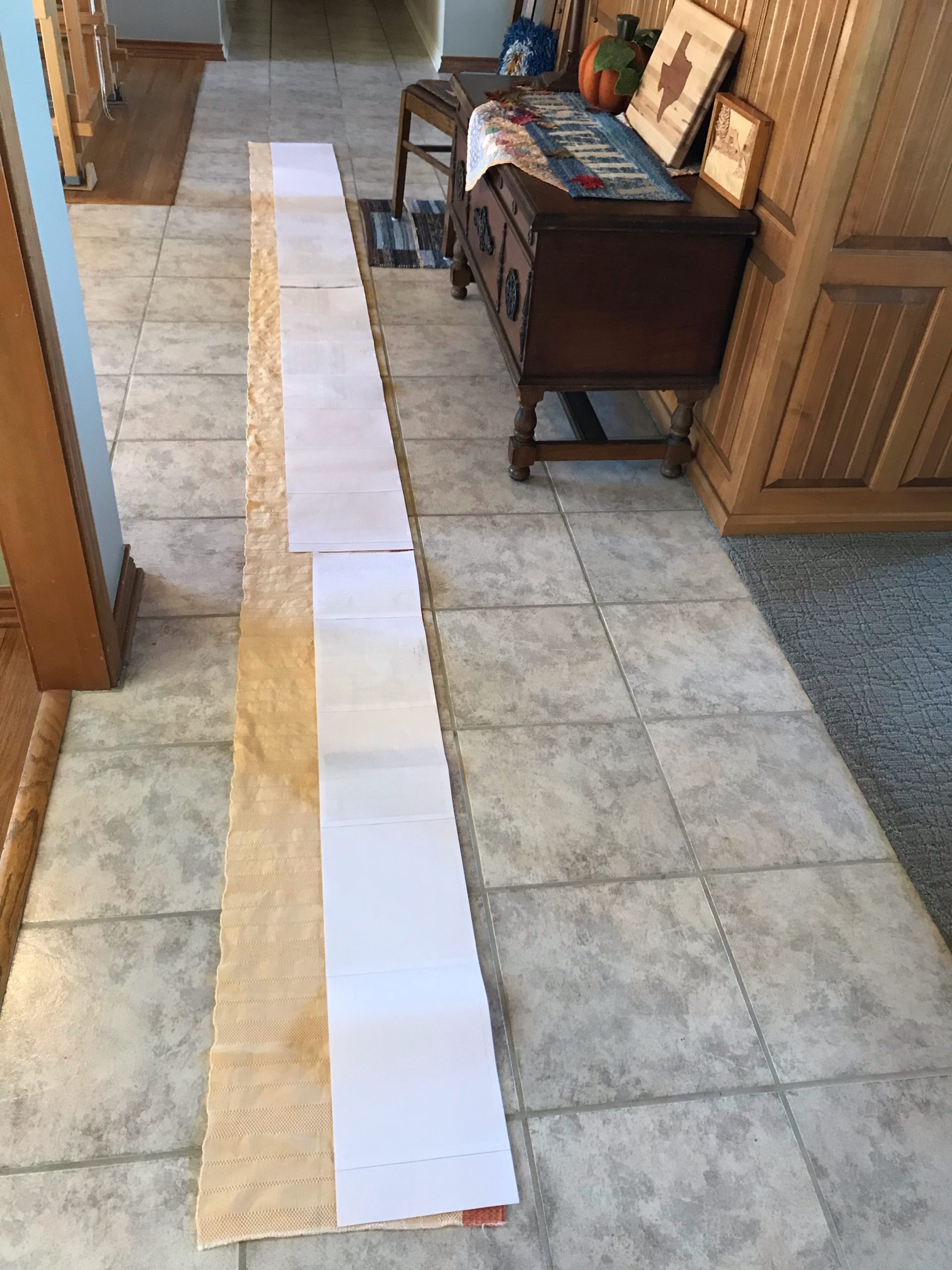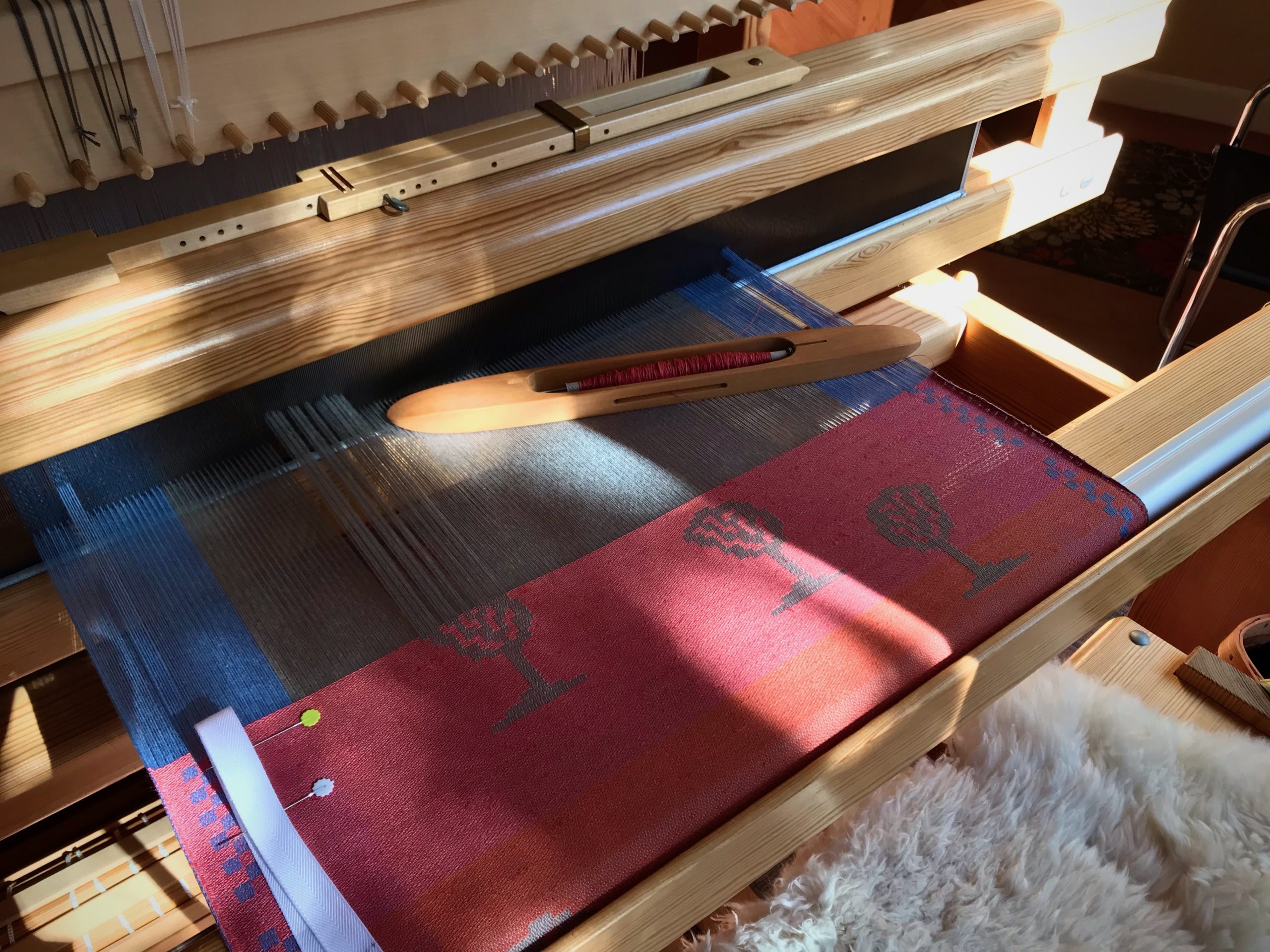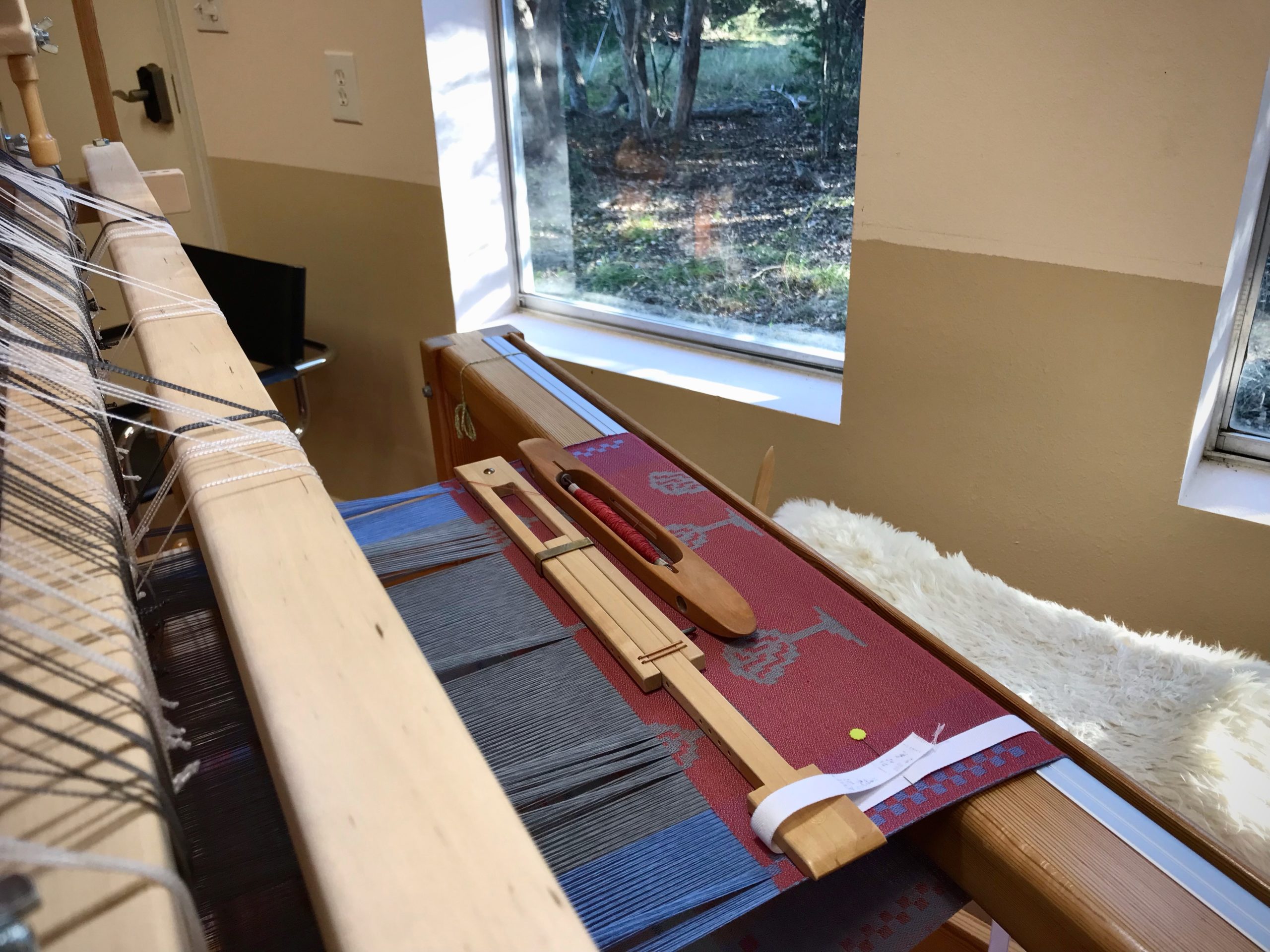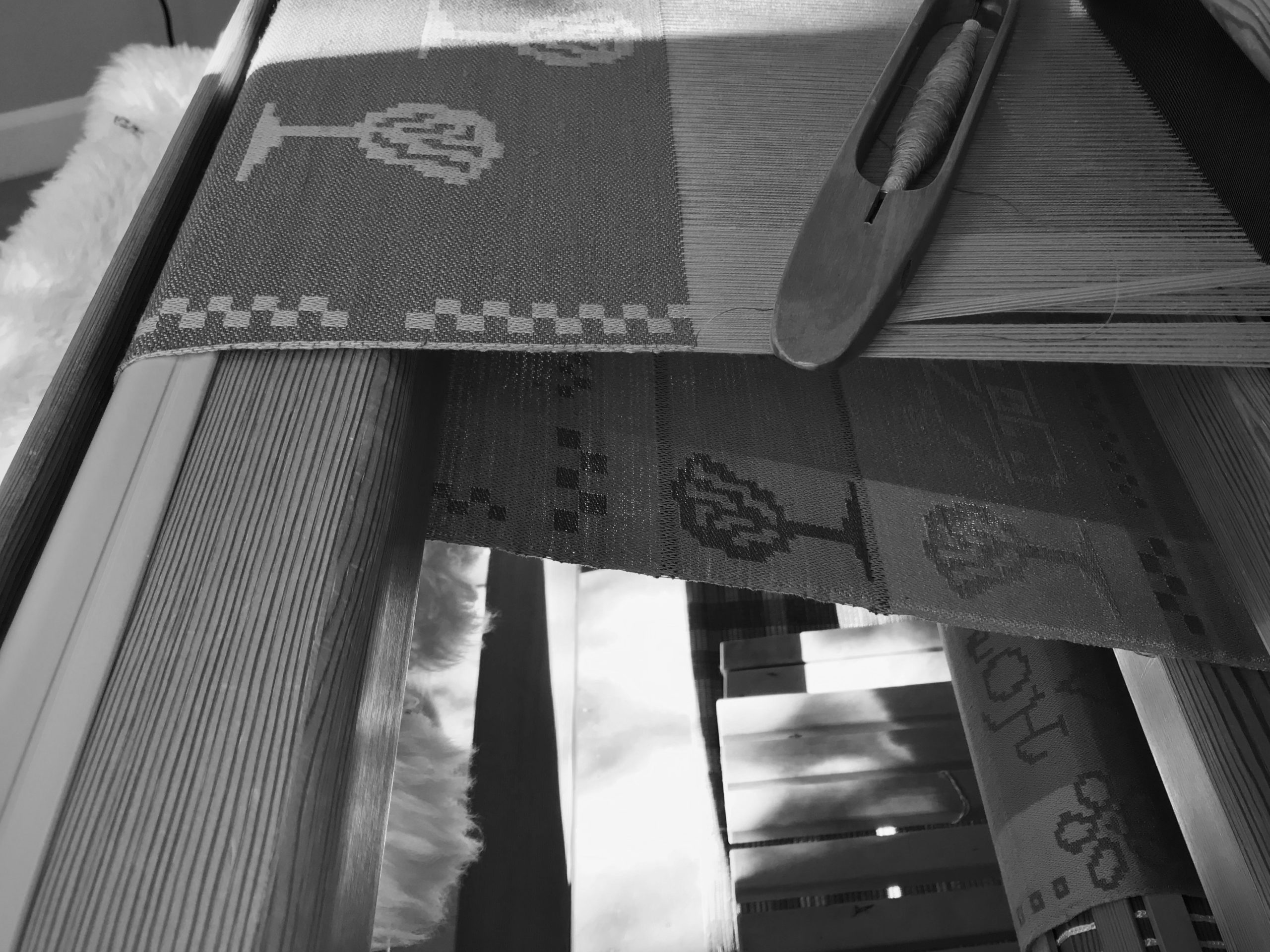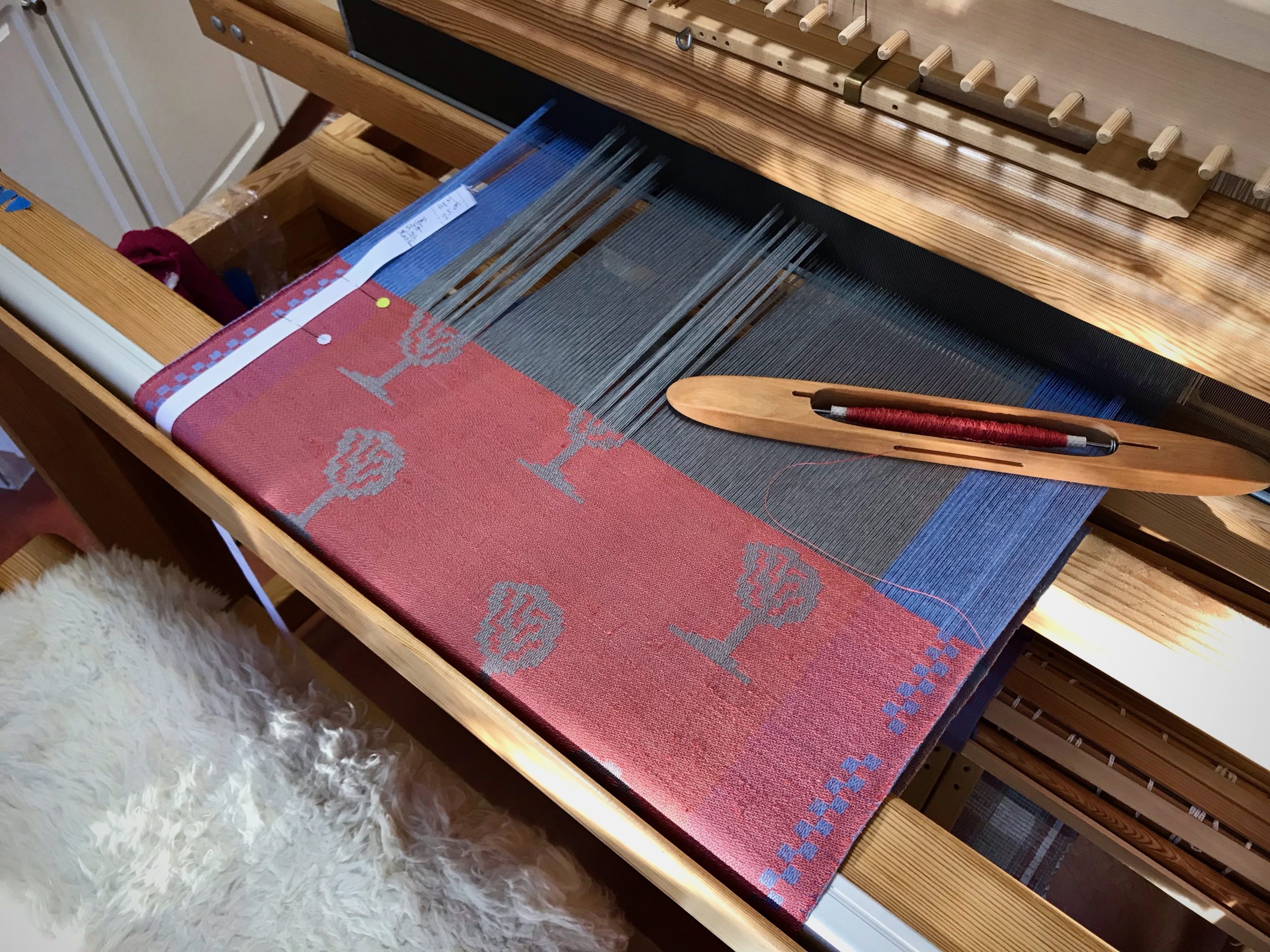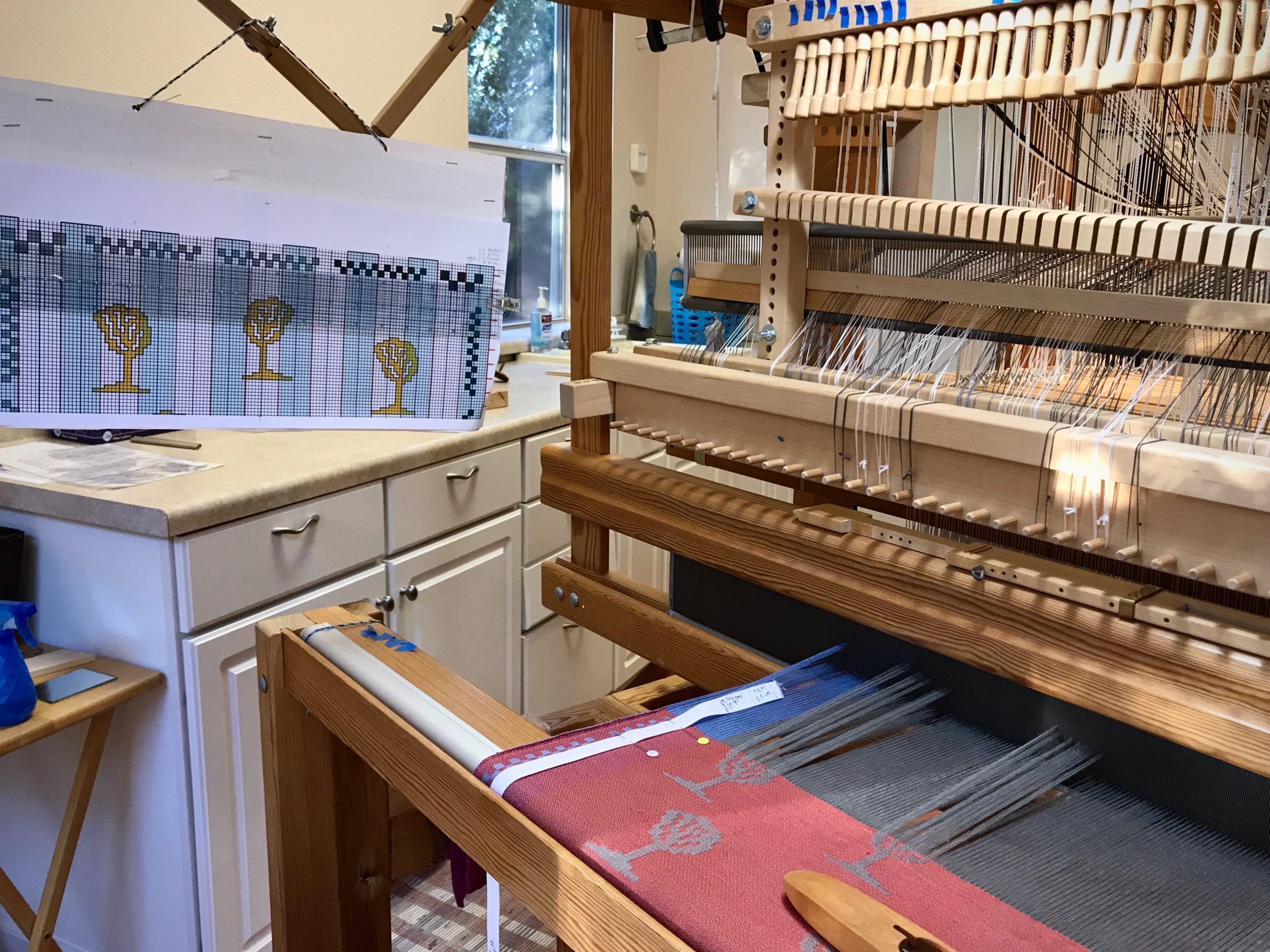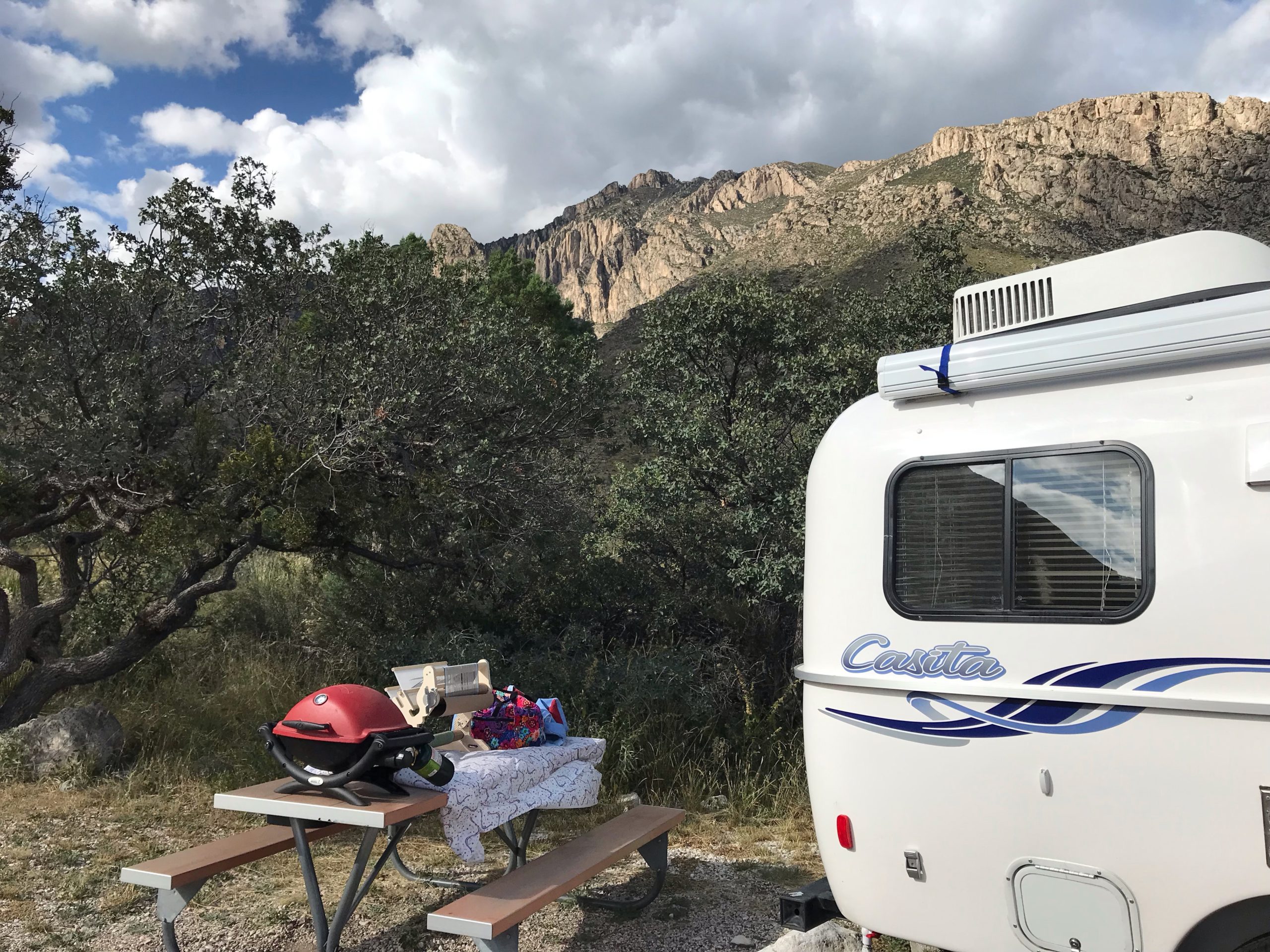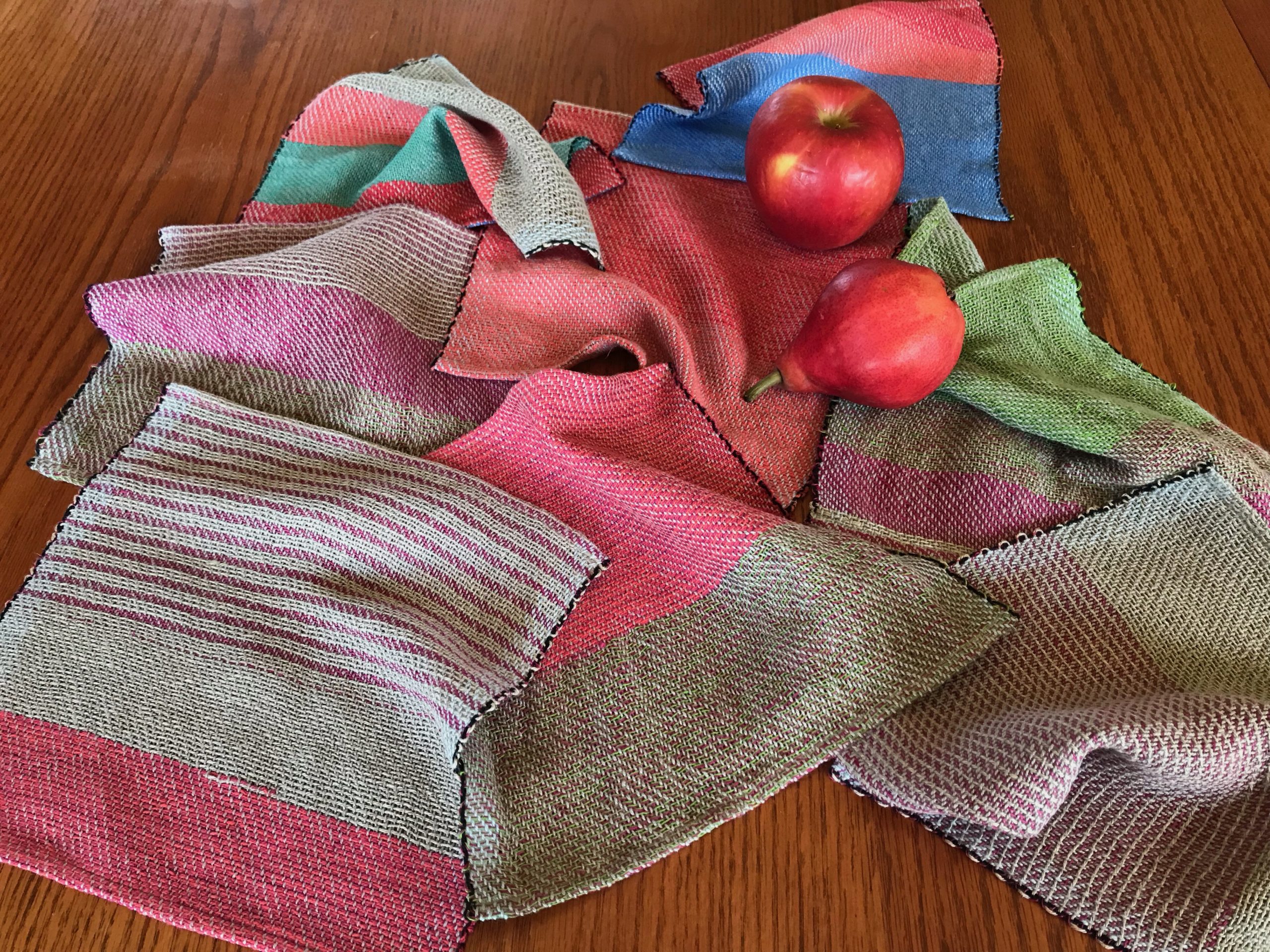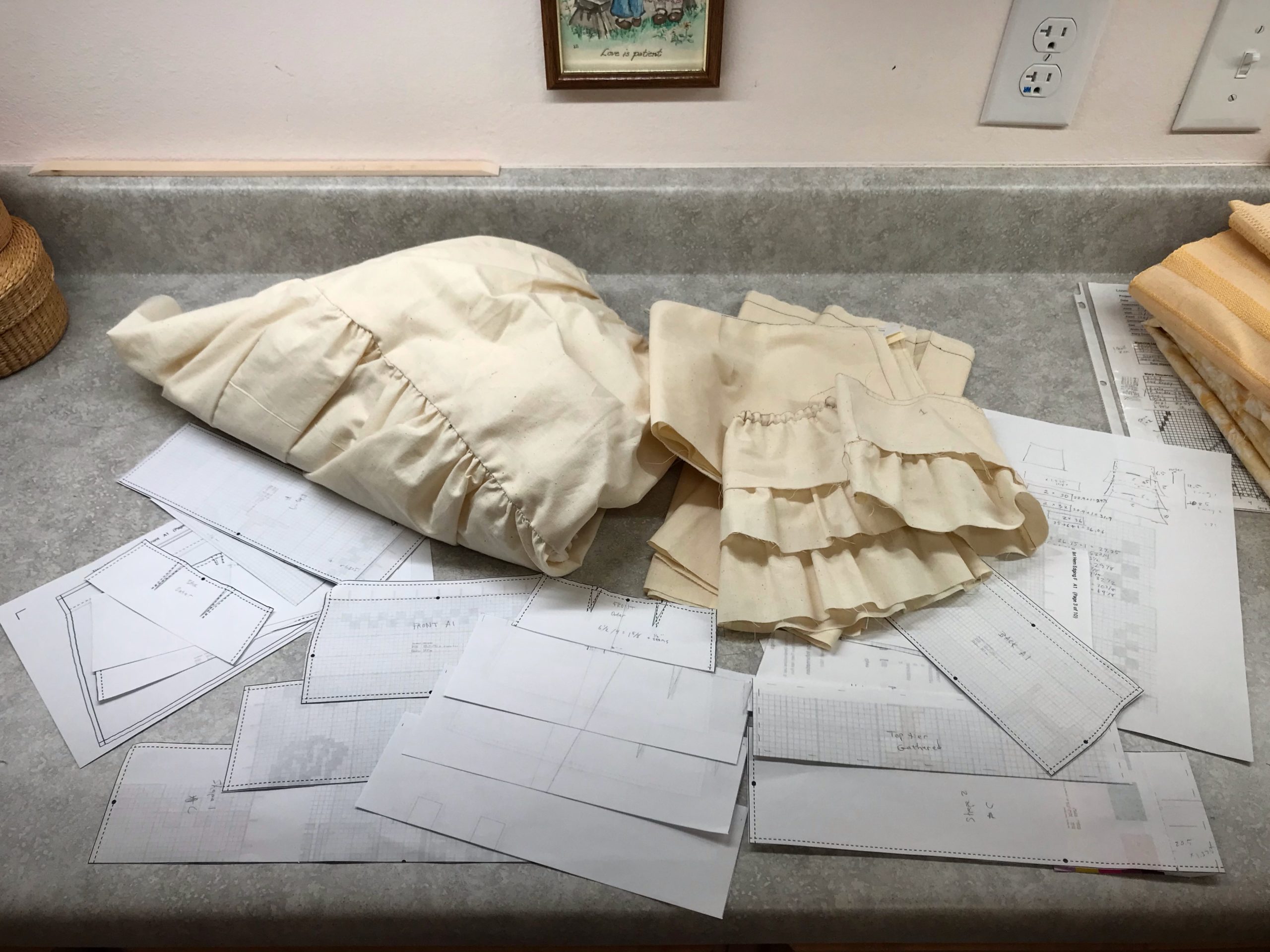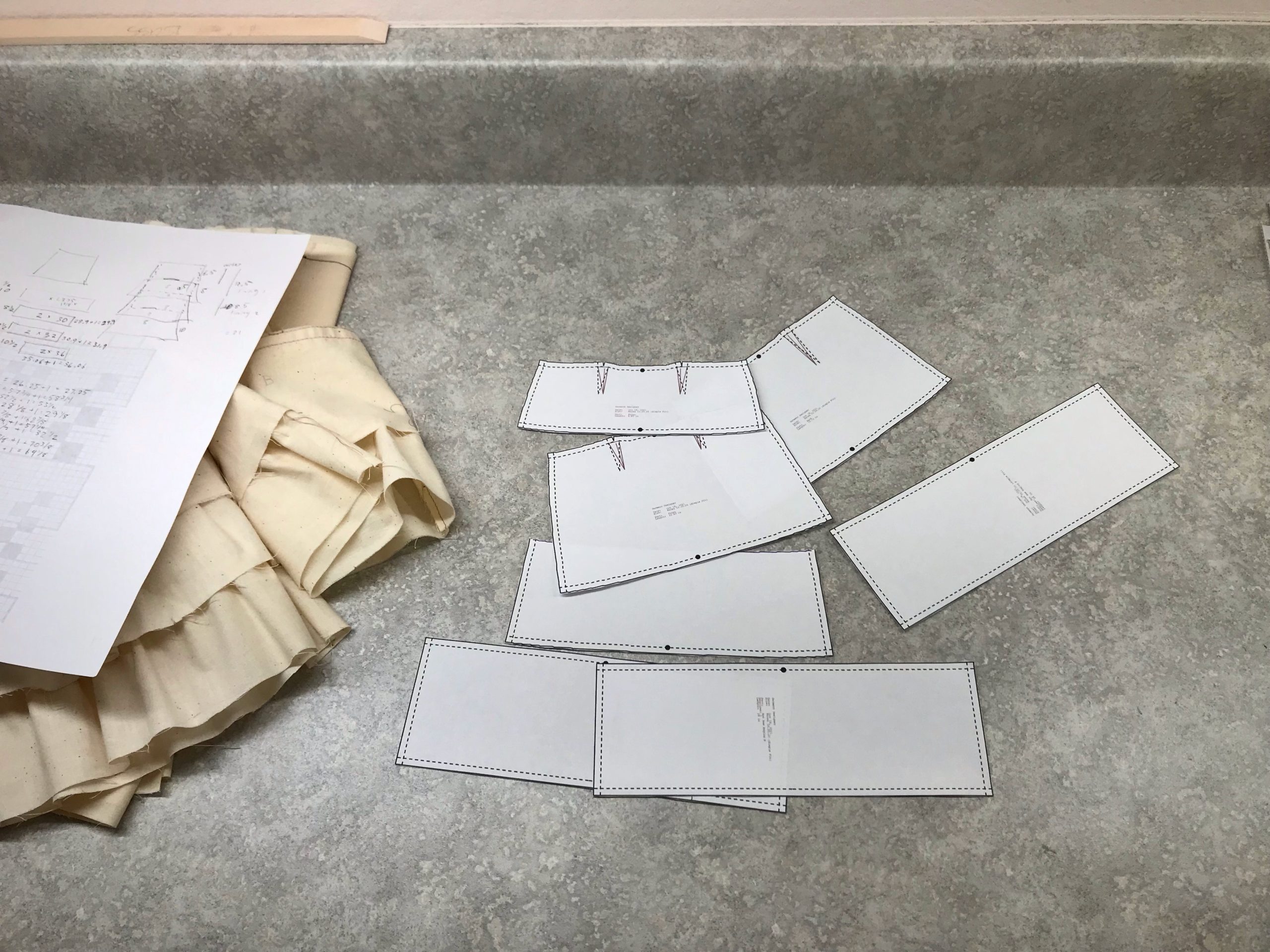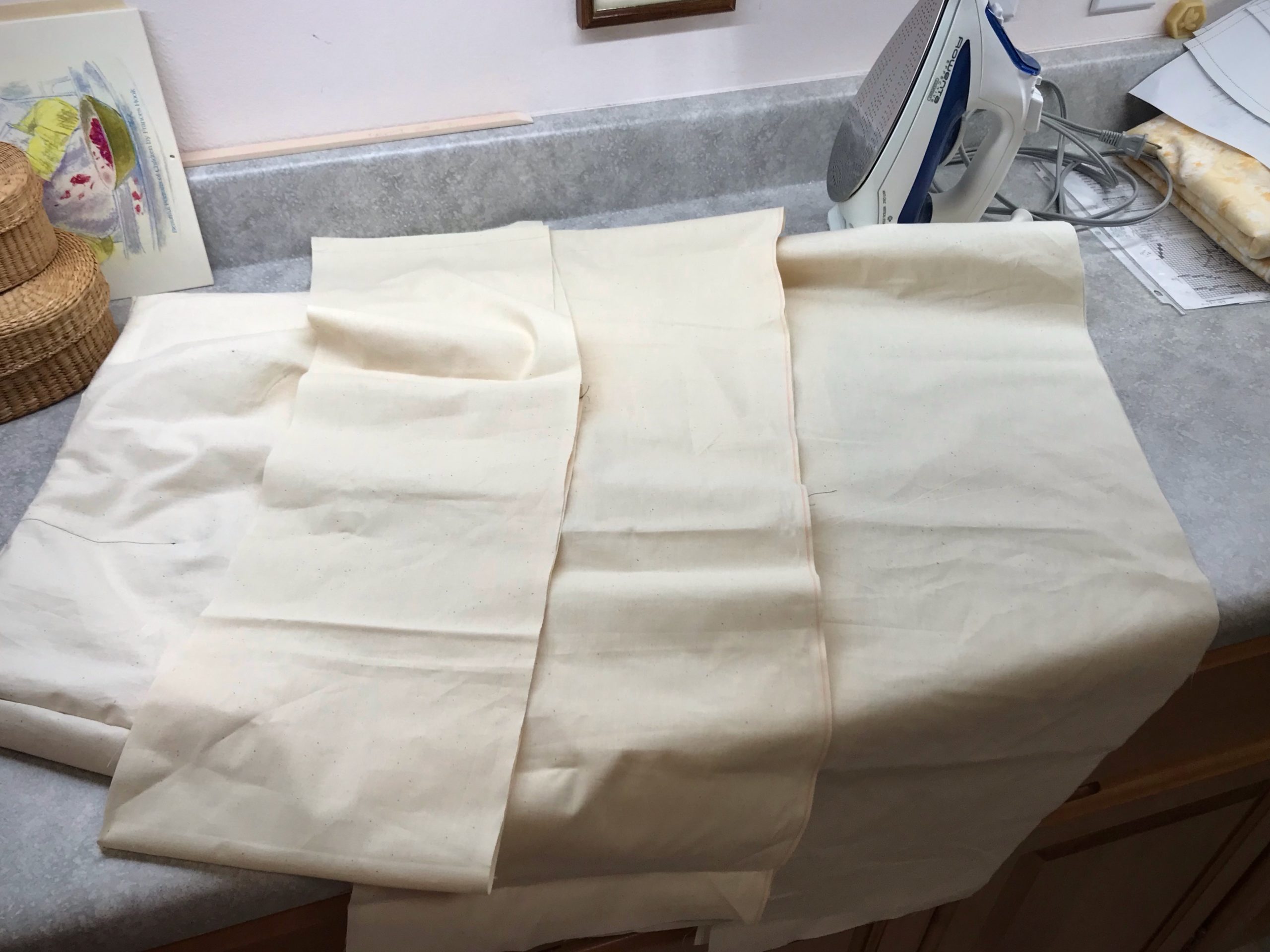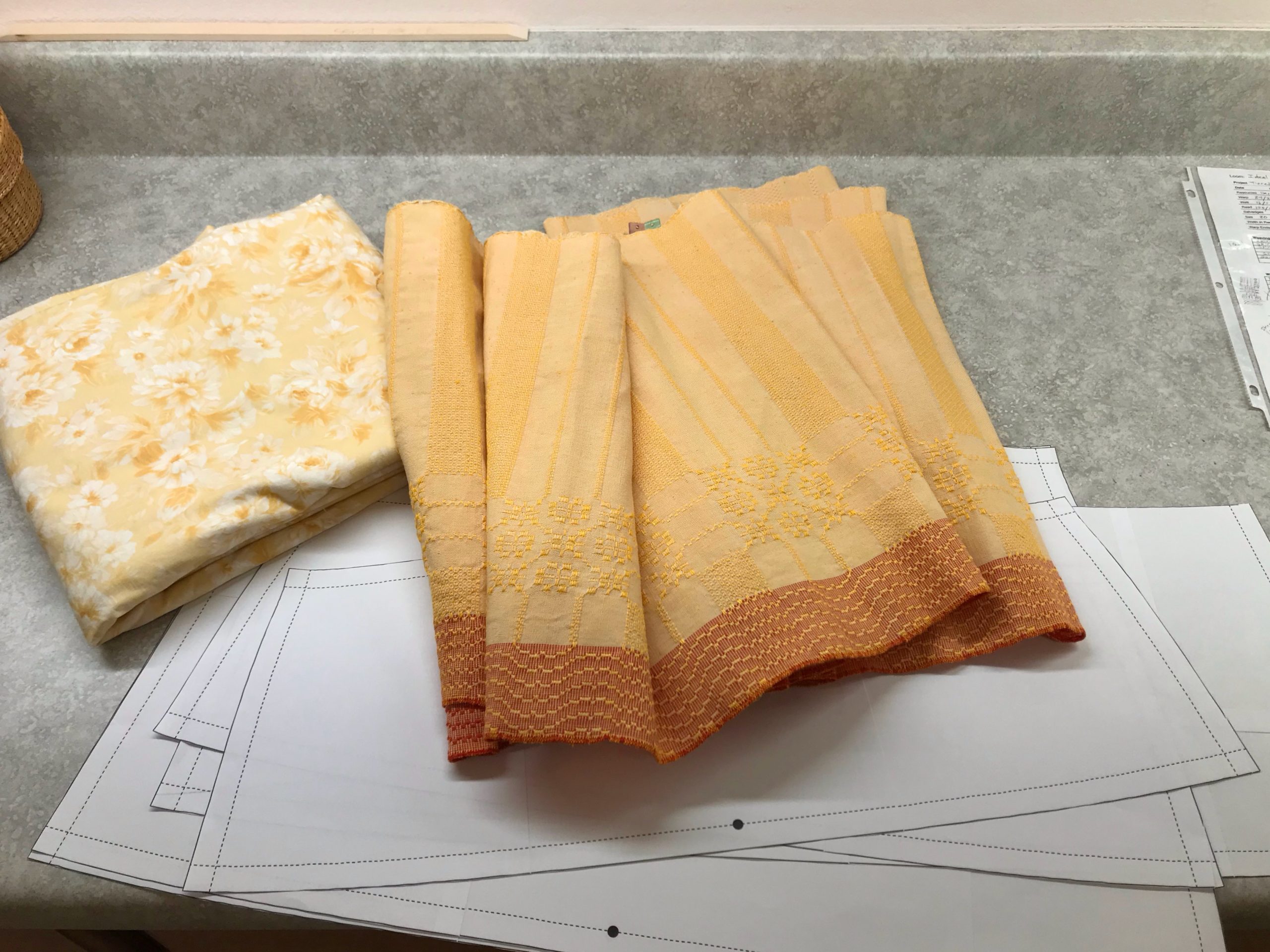Remember potholder looms? I made many such potholders when I was young. It is a natural entry point for a budding weaver. My eight-year-old grandson has mastered potholders. He is ready for a bigger challenge. I ask, “Would you like to try weaving on a floor loom?” Wide-eyed, he says, “Yes!”
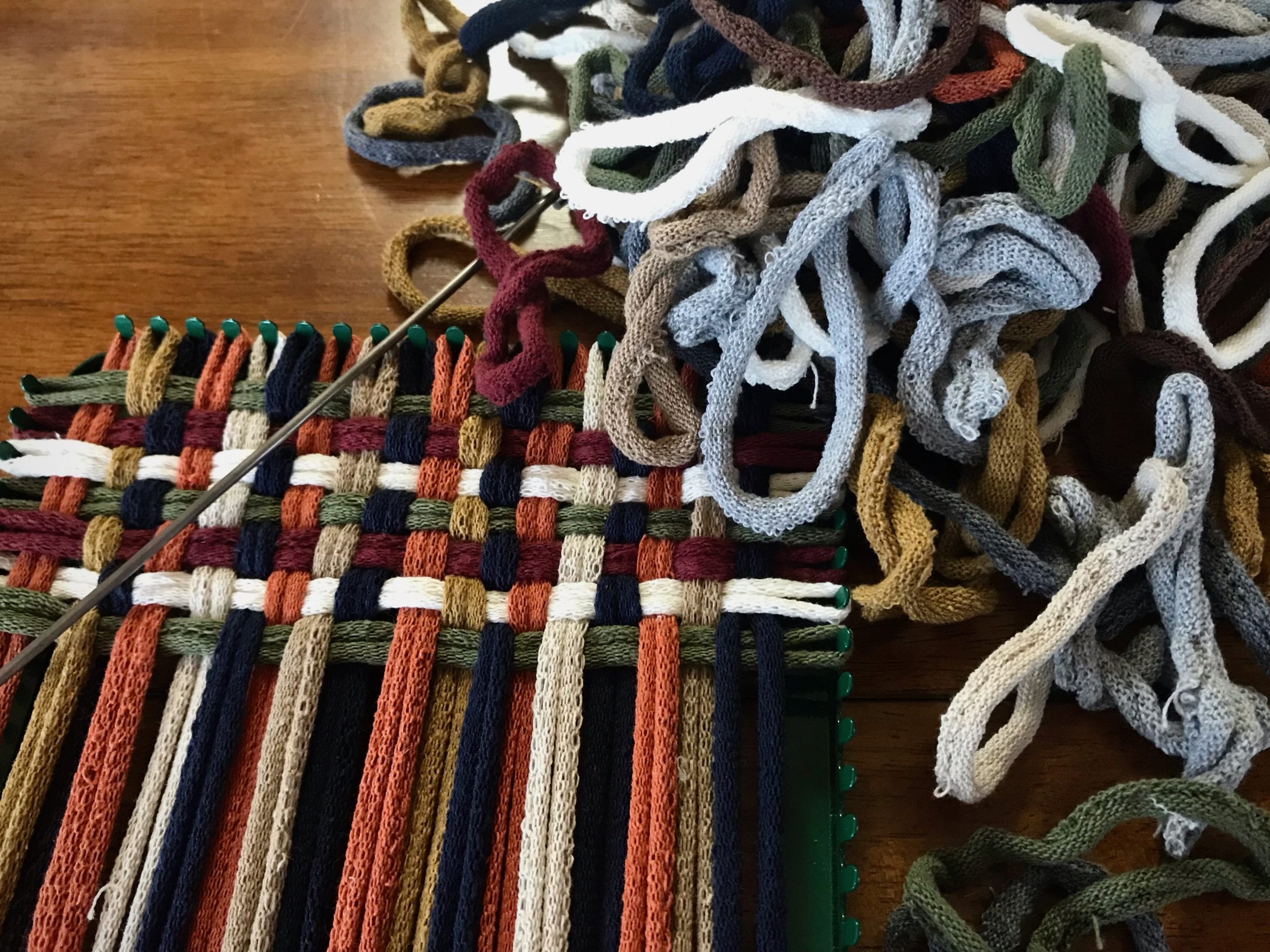
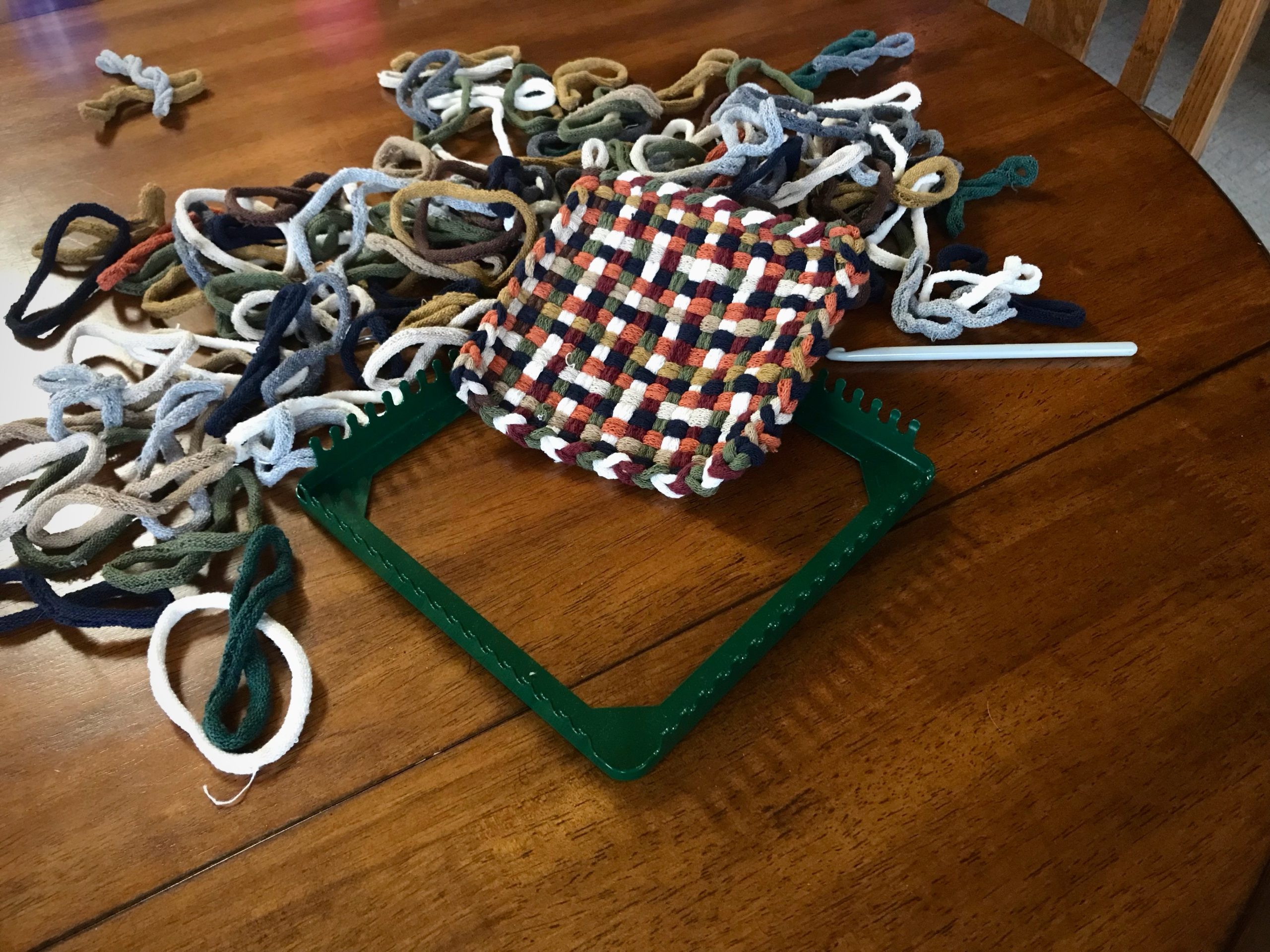
Sit here. Practice moving your feet on the treadles: Right foot 1-2-3-4; 1-2-3-4; left foot 5-6-7-8; 5-6-7-8. (Can you do it without looking at your feet?) Hold the shuttle in your right hand, and send it across the top of the warp over to your left hand. Practice gliding the shuttle back and forth on top of the warp several times to get the hang of it. Okay, I think you’re ready! Let’s do it!
Within a few minutes he is weaving unassisted. Ahh, the joy of seeing someone take pleasure in making cloth—especially, when that someone is your grandchild!
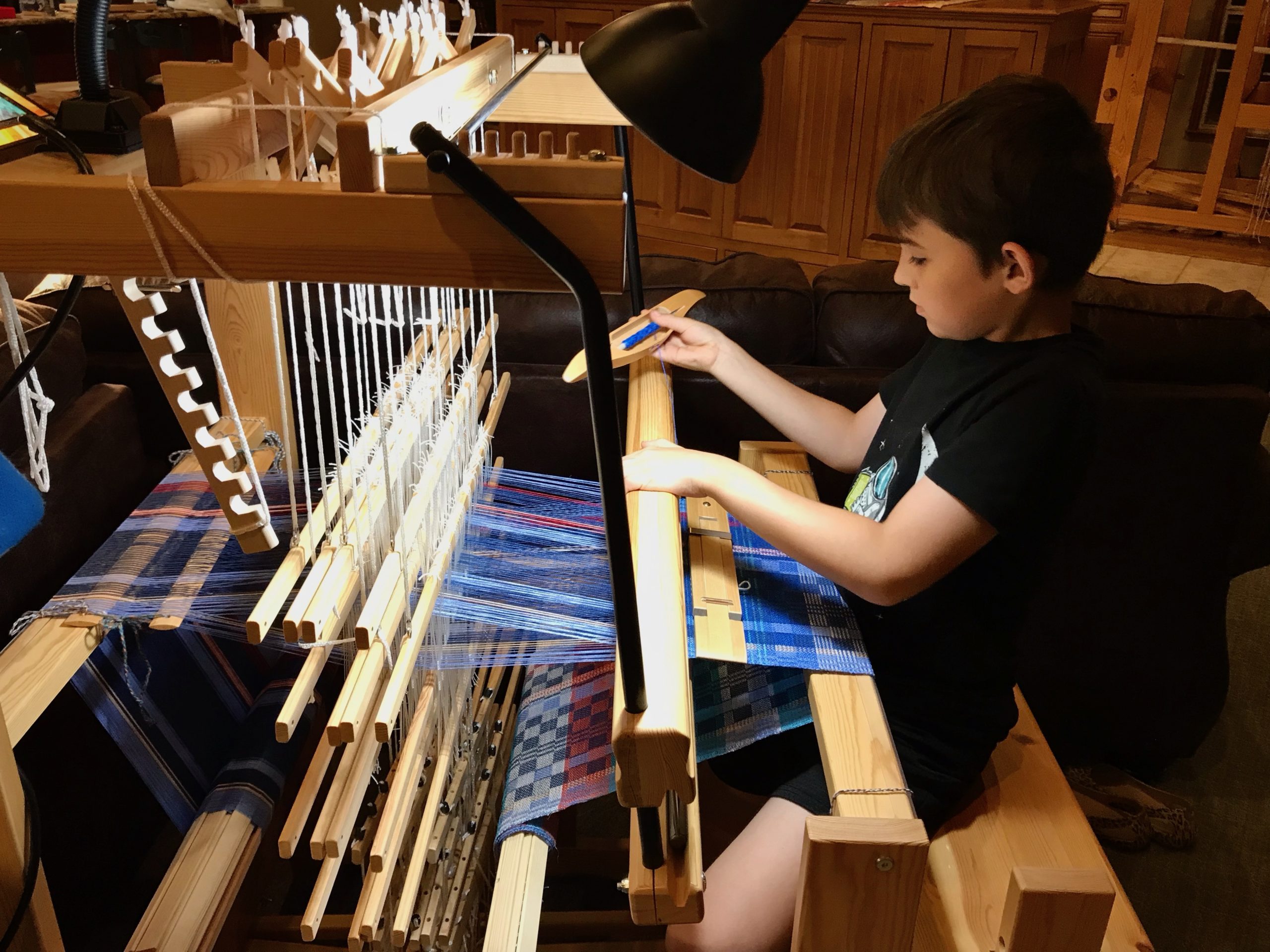
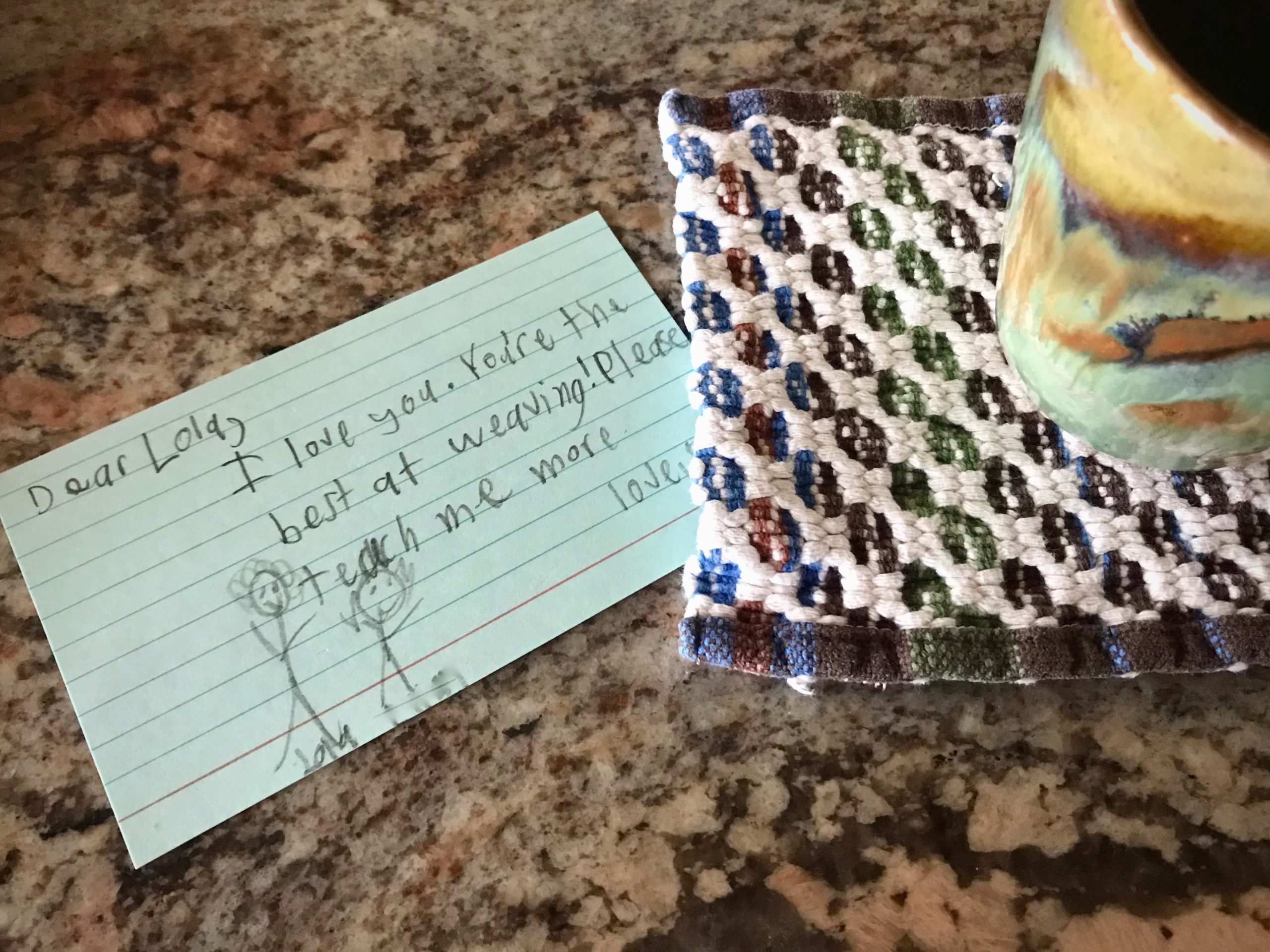
And now, the potholder loom grabs the attention of another grandchild. “Let me do it myself,” she says, like a typical five-year-old. The cycle repeats itself, and Lola (that’s me) smiles.
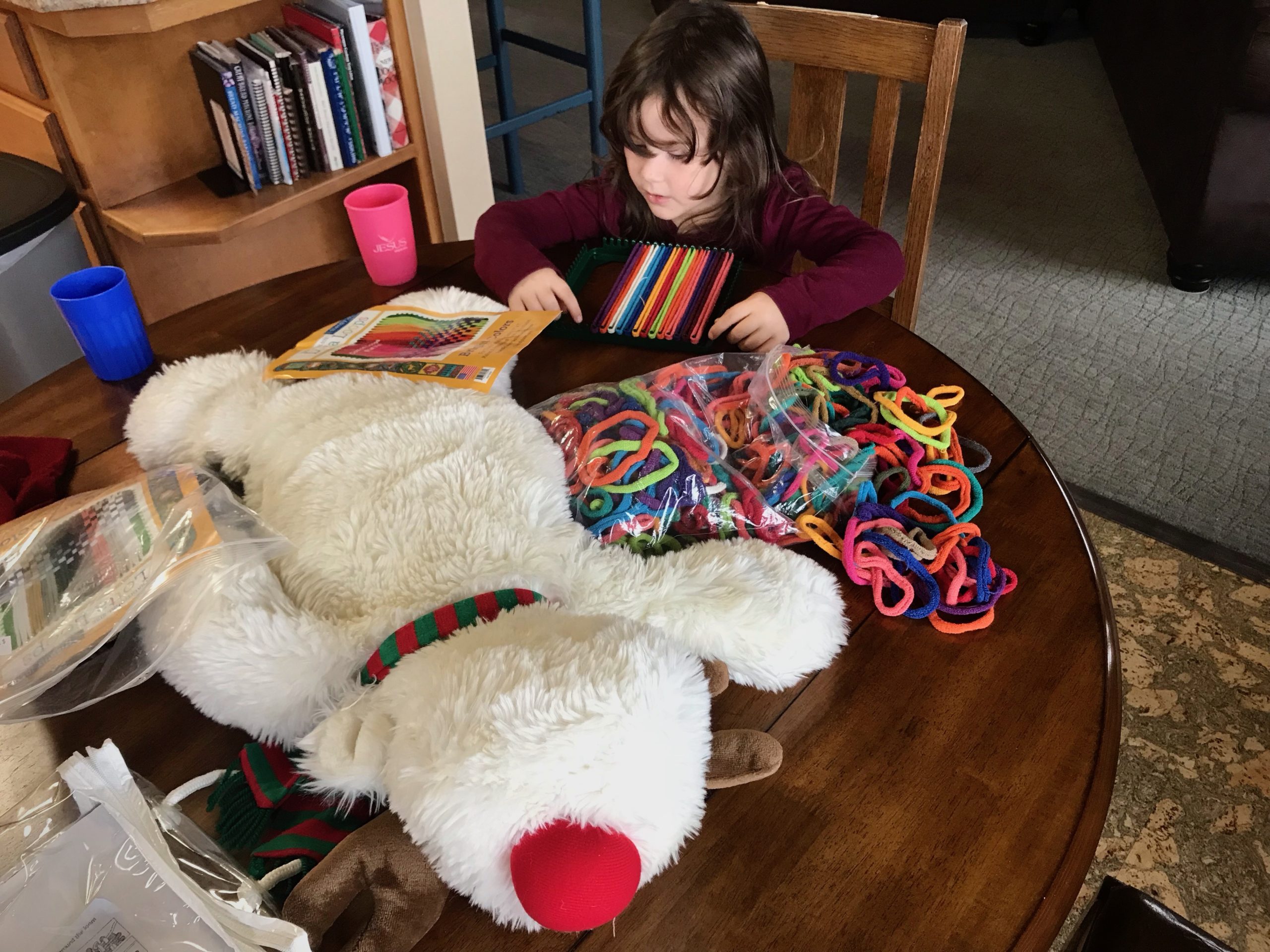
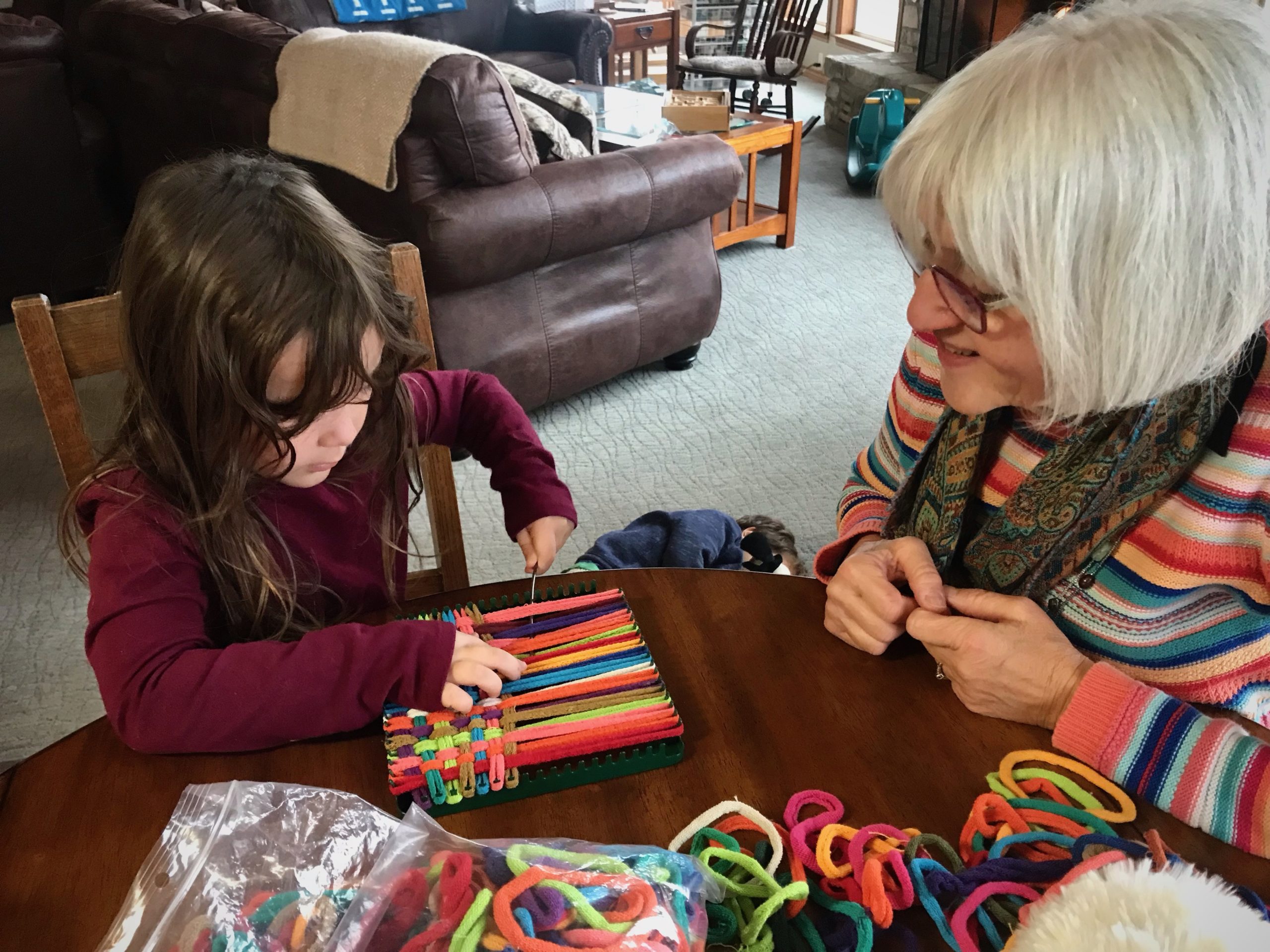
May you spread your joys to the next generation.
Happy Weaving,
Karen

